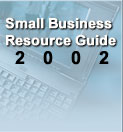Preparing Your Tax Return(s) and Information Returns
Reporting Business Losses
If your deductions for an investment or business activity are more
than the income it brings in, you have a net loss. There may be limits on how much, if
any, of the loss you can use to offset income from other sources.
Net Operating Loss (NOL). If your deductions for the year are
more than your income for the year, you may have a net operating loss (NOL). You can use
an NOL by deducting it from your income in another year or years.
A loss from operating a business is the most common reason for an
NOL.
Partnerships and S corporations generally cannot use an NOL. But
partners or shareholders can use their separate shares of the partnership's or S
corporation's business income and business deductions to figure their individual NOLs.
Carrybacks and carryforwards. For an NOL occurring in a tax year
beginning after August 5, 1997, the carryback period is reduced to 2 years and the
carryforward period is increased to 20 years. However, the carryback period remains 3
years for the part of an NOL that:
1. Is from a casualty or theft, or
2. In the case of a farm business or other qualified small business, is attributable to a
Presidentially declared disaster.
NOL
Steps
How to Figure
an NOL
When to
Use an NOL
How to Claim
an NOL Deduction
Corporations
Hobby Loss
Not-for-Profit Activities: If you do not carry
on your business or investment activity to make a profit, there is a limit on the
deductions you can take. You cannot use a loss from the activity to offset other income.
Activities you do as a hobby, or mainly for sport or recreation, come under this limit. So
does an investment activity intended only to produce tax losses for the investors.
The limit on not-for-profit losses applies to individuals,
partnerships, estates, trusts, and S corporations. It does not apply to corporations other
than S corporations.
Limit
on Deductions and Losses
Casualty Loss. A casualty is the
damage, destruction, or loss of property resulting from an identifiable event that is
sudden, unexpected, or unusual.
- A sudden event is one that is swift, not gradual or progressive.
- An unexpected event is one that is ordinarily unanticipated and
unintended.
- An unusual event is one that is not a day-to-day occurrence and that
is not typical of the activity in which you were engaged.
Generally, you can deduct a casualty loss only in the tax year in
which the casualty occurred. This is true even if you do not repair or replace the damaged
property until a later year.
Business and income-producing property. Use Form
4684 to report your casualty gains and losses.
Important References:
Publication
535
Business
Expenses
Form
1040 Schedule C Profit or
Loss from Business
Publication
536
Net Operating Losses
Form
1040X
Amended U.S. Individual Income Tax Return
Instructions
for 1040X
Form
1045
Application for Tentative Refund
Form
1120X
Amended U.S. Corporation Income Tax Return
Form
1138
Extension of Time for Payment of Taxes by a Corporation Expecting
a Net Operating
Loss
Carryback
Form
1139
Corporation Application for Tentative Refund
Publication
547
Casualties, Disasters and Thefts
Form
4684
Casualties and Thefts
Instructions
for Form 4684
Form
4797 Sales
of Business Property
Instructions
for Form 4797
Form
1040 Schedule A Itemized
Deductions
Form
1040 Schedule D Capital Gains
and Losses
